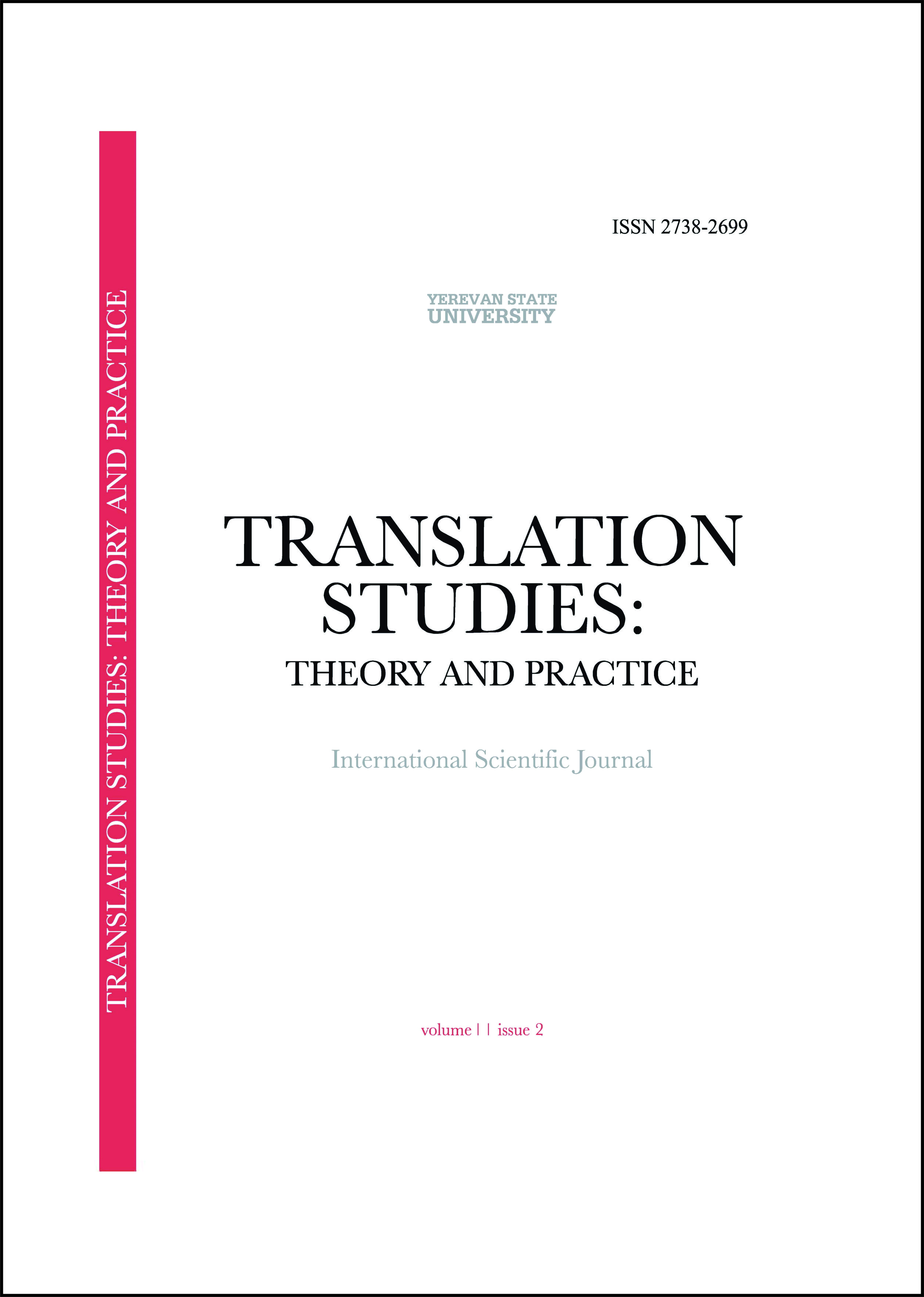Double-Sided Transformations of Culture-Bound Constituents in William Saroyan’s Cross-Cultural Domain
DOI:
https://doi.org/10.46991/TSTP/2021.1.2.031Keywords:
Saroyanesque identity, culture-bound element, pragmatic modification, cross-cultural environment, ethnic mentalityAbstract
The article focuses on the transformations, which occur in Russian and Armenian translations of culture-bound constituents in W. Saroyan’s fiction with special reference to the analysis of their pragmatic value and both cross-cultural and cross-language identification. The aim of the analysis is to reveal the so-called Saroyanesque identity and the translation perspectives of his specific manner of reproducing the actual reality, his personal vision of the world he lived in and created in, the world which combined the environment, circumstances, conditions, characters, cultures, ethnicity of two different communities – his native Armenian and no less native America. The so-called double-sided transformations of culture-bound constituents occur in W. Saroyan’s fiction at basically two levels: the cognitive level of ethnic and mental indicators transformations and the linguistic level of culture-bound elements translation (words, phrases, exclamations etc.). To keep Saroyanesque identity the translators should primarily transform the ideas, the concepts, the ethnic mentality of the characters, then the language media should undergo certain pragmatic modification to be correctly interpreted by the target audience.
References
Maslova, Valentina. 2005. “Kognitivnaya lingvistika.” Minsk: TetraSystems.
Newmark, Peter. 1991. “About Translation. Multilingual Matters.” UK
academia.edu›9377284/MULTILINGUAL_MATTERS_LTD
Nida, Eugene Albert. 1991. “Theories of Translation”. TTR, 4(1), 19–32 https://doi.org/10.7202/037079ar
Saroyan, William. Biography. William Saroyan Foundation. http://williamsaroyanfoundation.org › biography
Saroyan, William. 1973. “Old Country Advice to the American Traveller”. In “My Name Is Aram”. NY, Dell Publishing Co., 134-137.
Saroyan, William. 1973. “My Cousin Dikran, the Orator”. In “My Name Is Aram”. NY, Dell Publishing Co., 75-84.
Saroyan, William. 1984. “The Armenian and the Armenian” Ararat. In A Special Issue on William Saroyan. Volume XXV № 2. Issue № 98. Spring. 7.
Saroyan, William. 1988. “Im zarmik hretor Tigrany”. In Yntir erker, Book 1 “Patmvacqner. Mardkayin Katakergwutyun”. Yerevan: Sovetakan grokh, 258-264.
Saroyan, William. 1988. “Ghorhurdner amerikaci dganaparhordin”. In Yntir erker, Book 1 “Patmvacqner. Mardkayin Katakergwutyun”. Yerevan: Sovetakan grokh, 298-300.
Saroyan, William. 2021. “Hajy ev hajy”. https://www.grakantert.am › archives
Saroyan, William. 1980. “Moy kuzen Tigran, orator”. In “Menja zovut Aram”. Yerevan: Sovetakan grokh, 44-49.
Saroyan, William. 1980. “Sovety amerikanskomu puteshestvenniku”. In “Menja zovut Aram”. Yerevan: Sovetakan grokh, 91-93.
Saroyan, William. 1994. “Armyanin i armyanin”. https://armeniangc.com › biblioteka
Schweitzer, Alexander. 1987. “Teoria perevoda: status, problemy, aspecty”. Moscow: Nauka, 215
Wierzbicka, Anna. 1997. “Yazyk. Kultura. Poznanie.” Moscow: Russkie slovari.
Downloads
Published
How to Cite
Issue
Section
License
Copyright (c) 2021 Gayane Gasparyan

This work is licensed under a Creative Commons Attribution-NonCommercial 4.0 International License.










